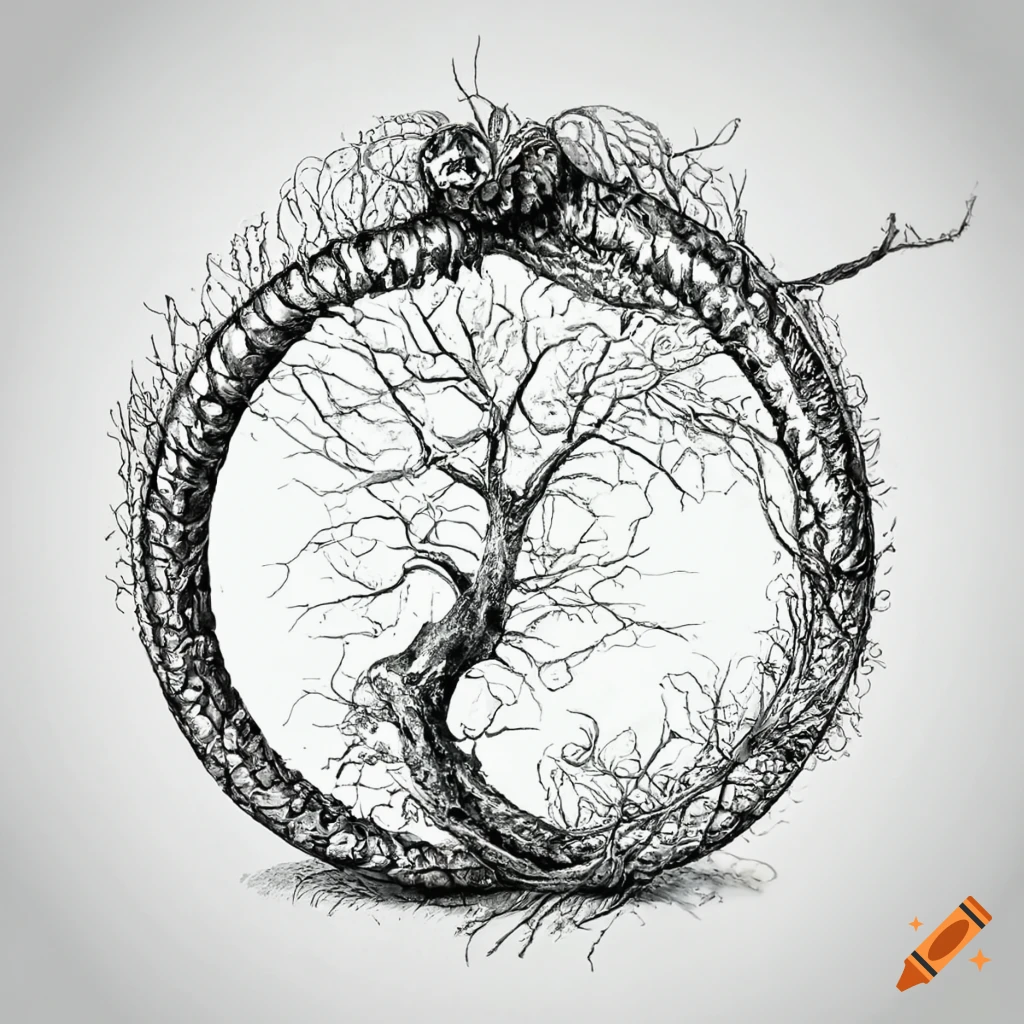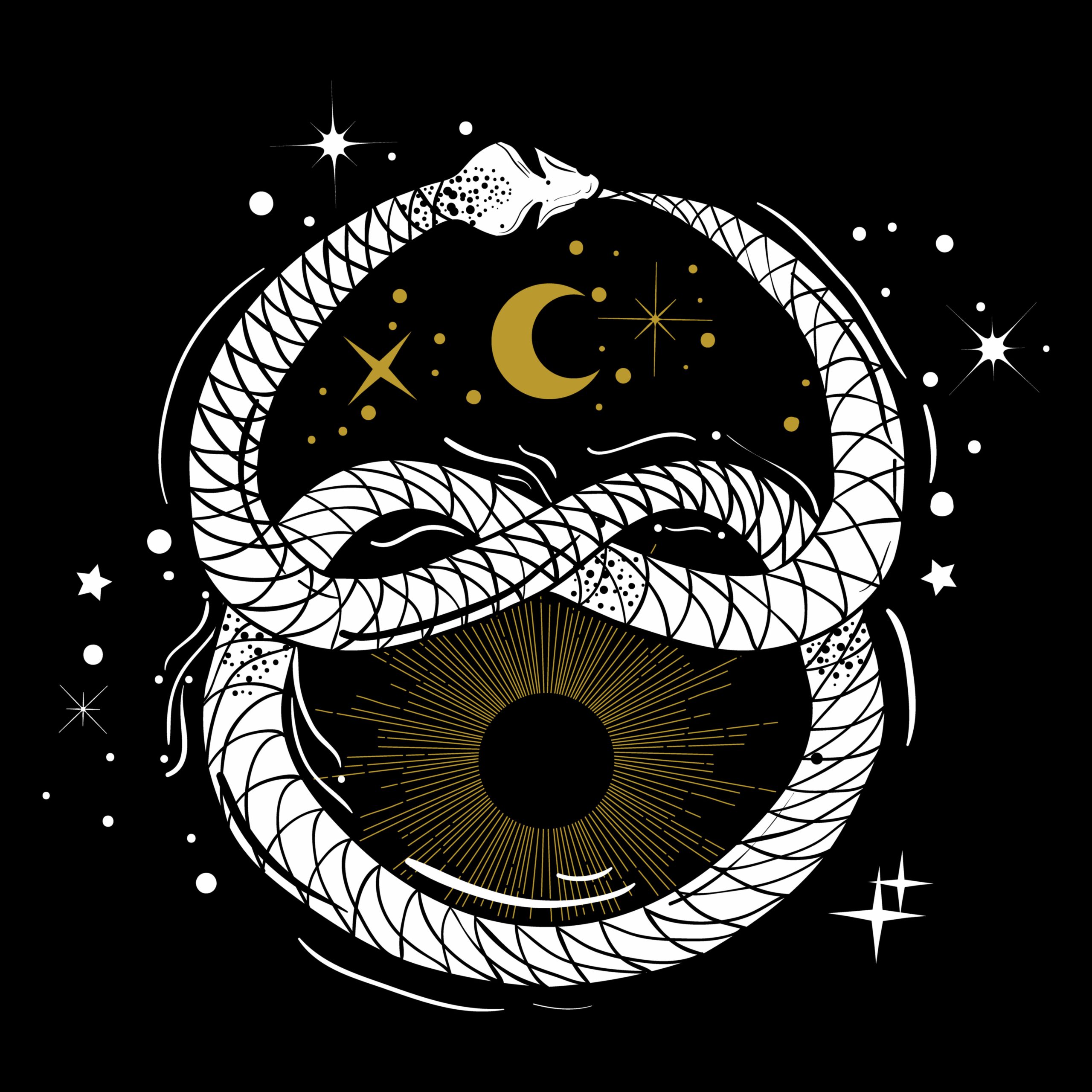The Concept of a Snake Eating Itself
The concept of a snake eating itself is often depicted in the form of an ancient symbol known as the Ouroboros. The Ouroboros is a serpent or dragon eating its own tail, forming a circular shape. This symbol has been present in various cultures and has different interpretations across history.
Eternal Cycle or Continuity: One common interpretation is that the Ouroboros represents the cyclical nature of life, death, and rebirth. It symbolizes the eternal cycle of creation and destruction, where each end is also a new beginning. It implies a sense of continuity and interconnectedness in the cosmic order.
Infinity and Wholeness: The Ouroboros is sometimes associated with the concept of infinity. As the snake forms an unbroken loop, it represents the infinite and the eternal. In this sense, it signifies wholeness, unity, and the interconnectedness of all things.
Self-Reflection or Self-Consumption: Another interpretation is that the snake eating its own tail symbolizes self-reflection, self-sufficiency, or self-consumption. It can be seen as a metaphor for introspection, introspective knowledge, or the idea that the individual has the power to create and destroy aspects of their own existence.
Alchemy and Transformation: In alchemy, the Ouroboros is sometimes associated with the process of transformation and the idea of turning base materials into gold, symbolizing spiritual and personal evolution. The serpent's consumption of its own tail can be seen as a metaphor for the alchemical process of dissolution and reintegration.
Unity of Opposites: The Ouroboros is also linked to the philosophical concept of the unity of opposites, where conflicting forces are interconnected and interdependent. The serpent, representing opposing forces, is harmoniously balanced in a circular form, suggesting that opposites are ultimately part of a unified whole.
Overall, the philosophy behind the snake eating itself, as symbolized by the Ouroboros, encompasses themes of cyclicality, infinity, unity, transformation, and self-reflection. It is a rich and versatile symbol that has been used and interpreted in various ways throughout different cultures and historical periods.
The Ouroboros is an ancient symbol with roots in various cultures throughout history. It has been found in different forms and interpretations across diverse civilizations. Here are some notable instances of the Ouroboros in different cultural contexts:
Ancient Egypt: The Ouroboros is often associated with ancient Egyptian mythology, where it represents the sun god Ra. Ra was thought to travel through the sky during the day and journey through the underworld at night, symbolizing the cyclical nature of the sun's rising and setting.
Ancient Greece: In ancient Greek philosophy, the Ouroboros was associated with the concept of the eternal return or cyclicality. It was used to represent the idea that time is circular rather than linear. The philosopher Heraclitus, for example, referenced the idea of a "circular time" in his writings.
Gnosticism: The Ouroboros is also found in Gnostic traditions, where it is associated with the concept of eternity and the cyclical nature of existence. In Gnostic thought, it can represent the divine cycle of emanation and return to the source.
Alchemy: During the medieval period, the Ouroboros gained prominence in alchemical traditions. Alchemists used it to symbolize the cyclical processes of transformation, particularly the idea of death and rebirth in the pursuit of spiritual enlightenment and the philosopher's stone.
Norse Mythology: The Ouroboros appears in Norse mythology as Jormungandr, the World Serpent. Jormungandr encircles Midgard, the world of humans, and is said to release its tail during Ragnarok, the end of the world.
Other Cultures: The Ouroboros is also found in Chinese, Hindu, and Mesoamerican mythologies, among others, each with its own symbolic interpretation related to cycles, continuity, and cosmic order.
The widespread use of the Ouroboros in various cultures and contexts highlights its enduring and universal appeal as a symbol representing fundamental aspects of existence, such as cyclical time, eternal return, and the interconnectedness of opposites.
The Ouroboros has become a popular and recognizable symbol in contemporary pop culture, appearing in various forms across different media. Here are some instances where the Ouroboros has made its mark:
- TV Shows and Movies:
- In the TV series "Fullmetal Alchemist," the Ouroboros is a central symbol associated with a secret society and alchemical themes.
- In the TV show "The Magicians," the Ouroboros is featured as a magical symbol associated with time loops and alternate timelines.
- The movie "The NeverEnding Story" features the Auryn, a medallion with two intertwined snakes, which bears a resemblance to the Ouroboros.
- Video Games:
- The Ouroboros is often used in video games to convey themes of eternal cycles, resurrection, and cosmic balance. Games like "God of War" and "Assassin's Creed" feature the symbol in various contexts.
- In the game series "Metal Gear Solid," the Ouroboros is referenced as part of the narrative's exploration of recurring themes and cycles.
- Literature:
- Novels and book series, particularly those with fantasy or mystical themes, sometimes incorporate the Ouroboros as a symbol of eternal cycles and cosmic balance.
- Neil Gaiman's "The Sandman" graphic novels feature the Ouroboros as a symbol of the endless cycle of creation and destruction.
- Music and Album Art:
- Some musicians and bands use the Ouroboros in their album art or as a visual motif in their music videos. It is often employed to convey themes of rebirth, transformation, and continuity.
- Tool, a progressive metal band, has used the Ouroboros in their album artwork, emphasizing themes of personal and spiritual evolution.
- Fashion and Merchandise:
- The Ouroboros has been incorporated into fashion designs, jewelry, and other merchandise. Its symbolism is often embraced by those interested in mysticism, spirituality, and self-discovery.
- Anime and Manga:
- Besides "Fullmetal Alchemist," the Ouroboros appears in various anime and manga series, often tied to alchemical or supernatural themes.
- Comics and Graphic Novels:
- The Ouroboros can be found in comics and graphic novels, used as a symbol to represent cyclical storytelling or cosmic themes.
- Symbolic References:
- The Ouroboros is sometimes referenced in advertising, where its symbolism is employed to convey ideas of continuity, renewal, and interconnectedness.
In pop culture, the Ouroboros has become a versatile and visually striking symbol, resonating with themes of transformation, eternity, and the cyclical nature of existence. Its presence in various forms of entertainment reflects its enduring appeal and its ability to convey deep and timeless meanings.












































